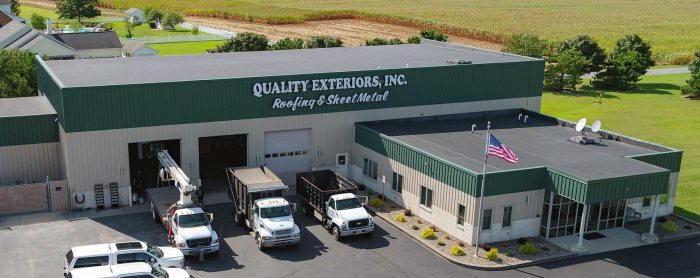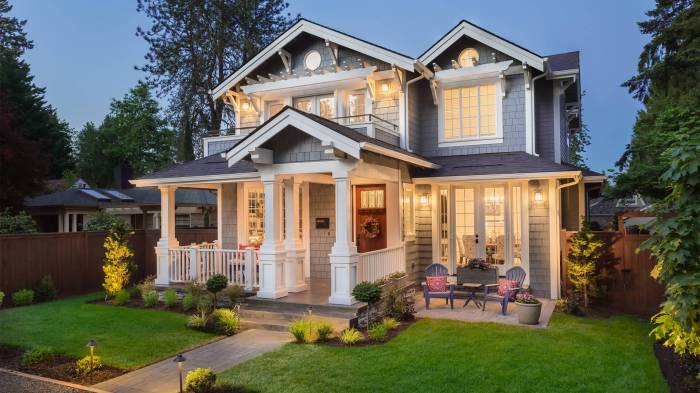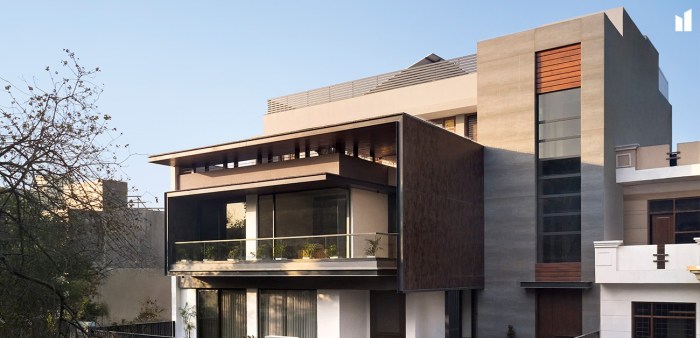Crafting Quality Exteriors: Enhancing Property Value Through Exceptional Design
As quality exteriors take center stage, this opening passage beckons readers into a world crafted with good knowledge, ensuring a reading experience that is both absorbing and distinctly original.
Exploring the definition, characteristics, materials, and maintenance of quality exteriors provides a comprehensive understanding of how these elements contribute to the overall appeal and value of a property.
Definition of Quality Exteriors

Quality exteriors in the context of buildings or homes refer to the materials, design, and construction elements that contribute to the overall aesthetic appeal, durability, and functionality of the exterior of a property.
Materials and Elements Contributing to High-Quality Exteriors
Quality exteriors are often characterized by the use of premium materials and elements that are not only visually appealing but also durable and low-maintenance. Some examples include:
- High-quality siding materials such as fiber cement, brick, or natural stone.
- Energy-efficient windows and doors with proper insulation.
- Well-designed landscaping and outdoor living spaces.
- Durable roofing materials like metal or architectural shingles.
Importance of Quality Exteriors in Enhancing Property Value
Investing in quality exteriors can significantly enhance the value of a property for several reasons:
- Improved curb appeal: A well-maintained and aesthetically pleasing exterior can attract potential buyers and increase the overall attractiveness of the property.
- Increased durability and longevity: Quality materials and construction techniques ensure that the exterior of the property can withstand harsh weather conditions and requires minimal maintenance over time.
- Energy efficiency: Properly installed windows, doors, and insulation can help reduce energy costs and make the property more eco-friendly, which can be appealing to environmentally-conscious buyers.
Characteristics of Quality Exteriors
When it comes to distinguishing high-quality exteriors from standard ones, several key characteristics play a significant role in defining what makes a top-notch exterior. These characteristics encompass aspects such as durability, aesthetics, and design.
Durability
Durability is a crucial factor that sets quality exteriors apart. High-quality exteriors are built to withstand various weather conditions, resist wear and tear, and have a longer lifespan compared to standard exteriors. This durability is achieved through the use of premium materials, proper installation techniques, and regular maintenance.
Aesthetics and Design
The aesthetic appeal and design of an exterior also contribute to its quality. Quality exteriors are visually appealing, well-designed, and enhance the overall look of a property. Attention to detail, color coordination, and architectural harmony are key elements that make a quality exterior stand out.
Additionally, the design should be functional, providing both beauty and practicality to the property.
Materials for Quality Exteriors

When it comes to quality exteriors, the choice of materials plays a crucial role in determining the durability and aesthetics of the structure. Different materials offer unique benefits and drawbacks, making it essential to select the most suitable option based on specific requirements.
Common Materials Used for Quality Exteriors
- Brick: Brick is a popular choice for quality exteriors due to its durability and timeless appeal. It offers excellent protection against the elements and requires minimal maintenance. However, it can be costly compared to other materials.
- Stone: Stone exteriors convey a sense of elegance and luxury. They are extremely durable and can last a lifetime with proper care. However, the installation cost can be high, and some types of stone may require regular maintenance.
- Stucco: Stucco is a versatile material that can be applied to various surfaces, creating a seamless and smooth finish. It is relatively low maintenance and offers good insulation properties. On the downside, stucco may crack over time and require repairs.
- Siding: Siding comes in a variety of materials such as vinyl, wood, and fiber cement. It is a cost-effective option that offers a wide range of colors and styles. However, some types of siding may be prone to damage from moisture or pests.
Innovative Materials Revolutionizing Quality Exteriors
- Fiber Cement: Fiber cement is a durable and low-maintenance material that mimics the look of wood or stucco. It is resistant to rot, fire, and pests, making it an ideal choice for quality exteriors.
- Composite Wood: Composite wood combines wood fibers and recycled plastics to create a sustainable and long-lasting material. It offers the natural beauty of wood without the maintenance requirements, making it a popular choice for eco-friendly exteriors.
- Metal Panels: Metal panels are becoming increasingly popular for modern exteriors due to their sleek and contemporary appearance. They are lightweight, durable, and offer excellent weather resistance, making them a practical choice for quality exteriors.
Maintenance of Quality Exteriors

Regular maintenance of quality exteriors is crucial for preserving their integrity and aesthetics over time. By implementing a consistent maintenance schedule, homeowners can extend the lifespan of their exteriors and prevent costly repairs down the line. Weather conditions also play a significant role in the maintenance of quality exteriors, as exposure to elements like rain, snow, and UV rays can cause deterioration if not properly addressed.
Maintenance Schedule for Different Types of Quality Exterior Materials
- For vinyl siding: Clean annually with a mixture of water and mild soap, inspect for any damage or warping, and repaint every 5-7 years.
- For wood exteriors: Regularly check for signs of rot or pest infestation, sand and repaint every 3-5 years, and seal to protect against moisture.
- For brick exteriors: Power wash every 1-2 years, inspect mortar joints for cracks, and repair any damage promptly to prevent water infiltration.
- For stucco exteriors: Clean with a gentle detergent and water solution every 6-12 months, inspect for hairline cracks, and apply fresh coats of paint as needed.
Impact of Weather Conditions on the Maintenance of Quality Exteriors
Weather conditions can have a significant impact on the maintenance requirements of quality exteriors. Exposure to harsh elements can accelerate wear and tear, leading to premature deterioration if not properly maintained. For instance, frequent rain can cause water damage and mold growth, while extreme heat can fade paint and cause materials to expand and contract, resulting in cracks.
Epilogue
In conclusion, quality exteriors not only elevate the aesthetic appeal of a property but also play a crucial role in increasing its value and durability. By focusing on the key aspects discussed, homeowners can ensure that their exteriors stand the test of time and make a lasting impression.
Key Questions Answered
What are some examples of materials that contribute to high-quality exteriors?
Materials such as natural stone, fiber cement siding, and high-quality wood can enhance the aesthetics and durability of exteriors.
Why is regular maintenance important for preserving quality exteriors?
Regular maintenance helps prevent damage from weather conditions and extends the lifespan of exterior materials, maintaining their quality over time.
Are there any innovative materials revolutionizing quality exteriors?
Emerging materials like engineered wood siding and composite materials are pushing the boundaries of traditional exterior options, offering enhanced durability and design possibilities.